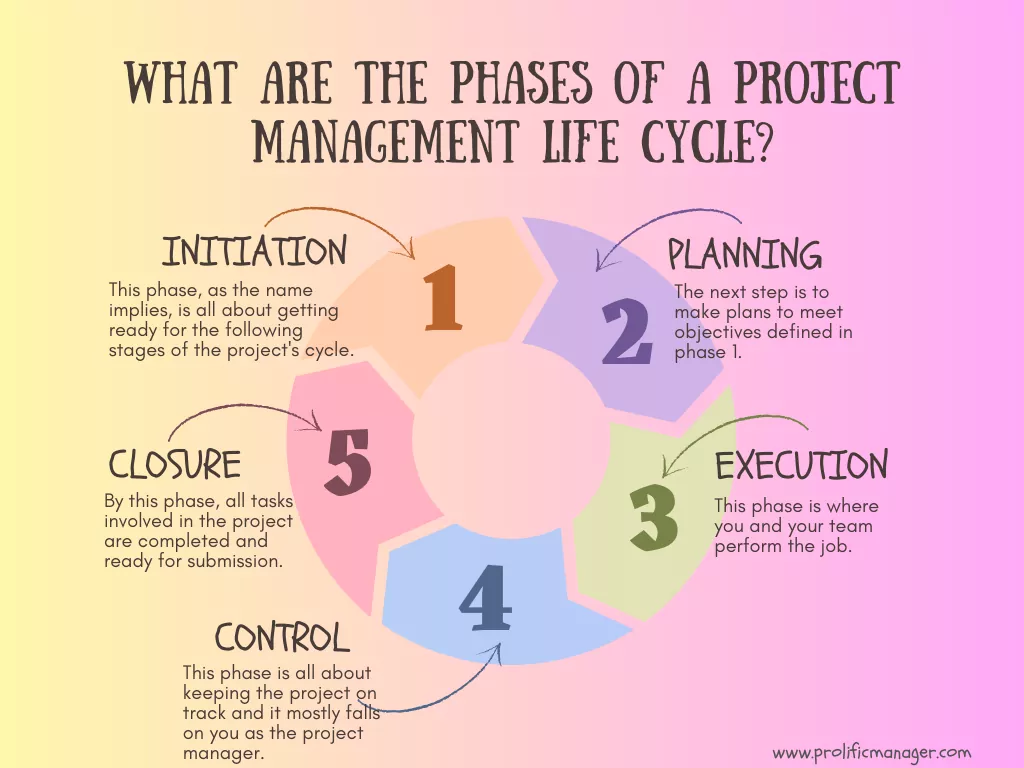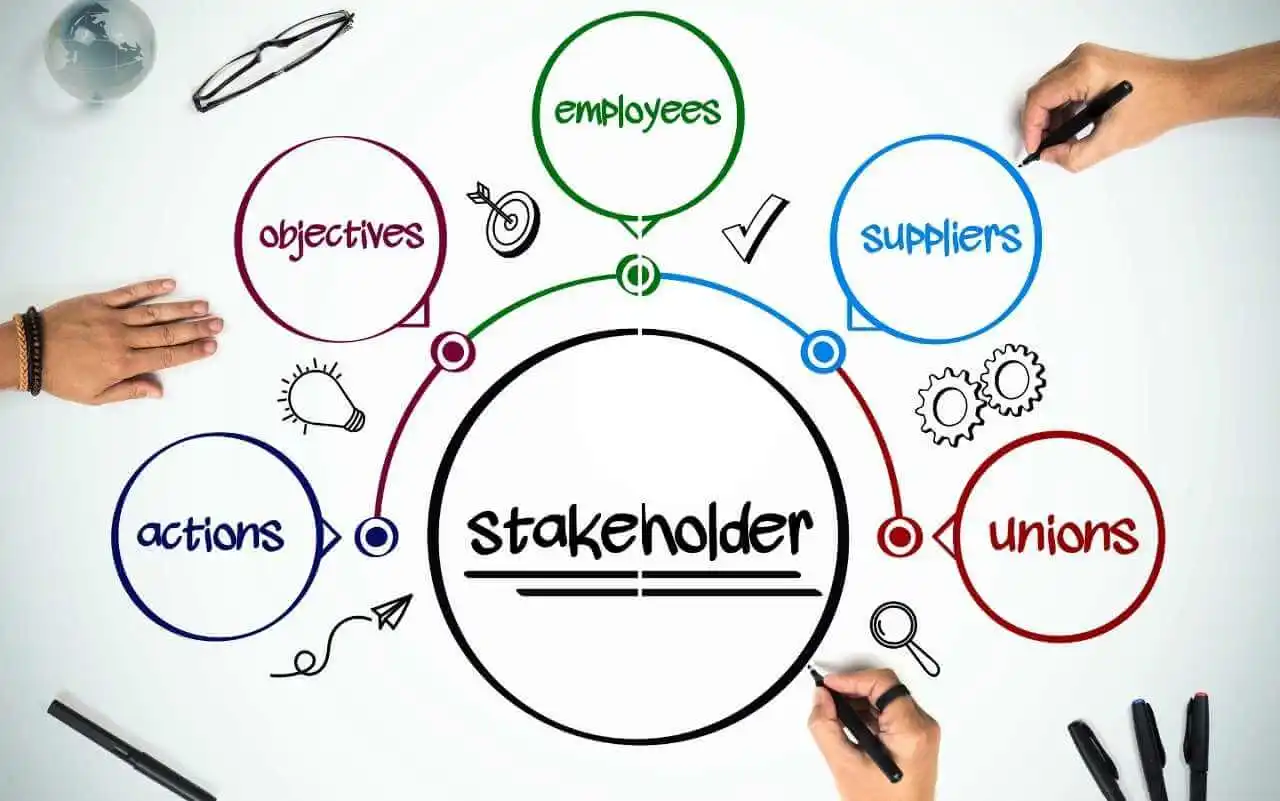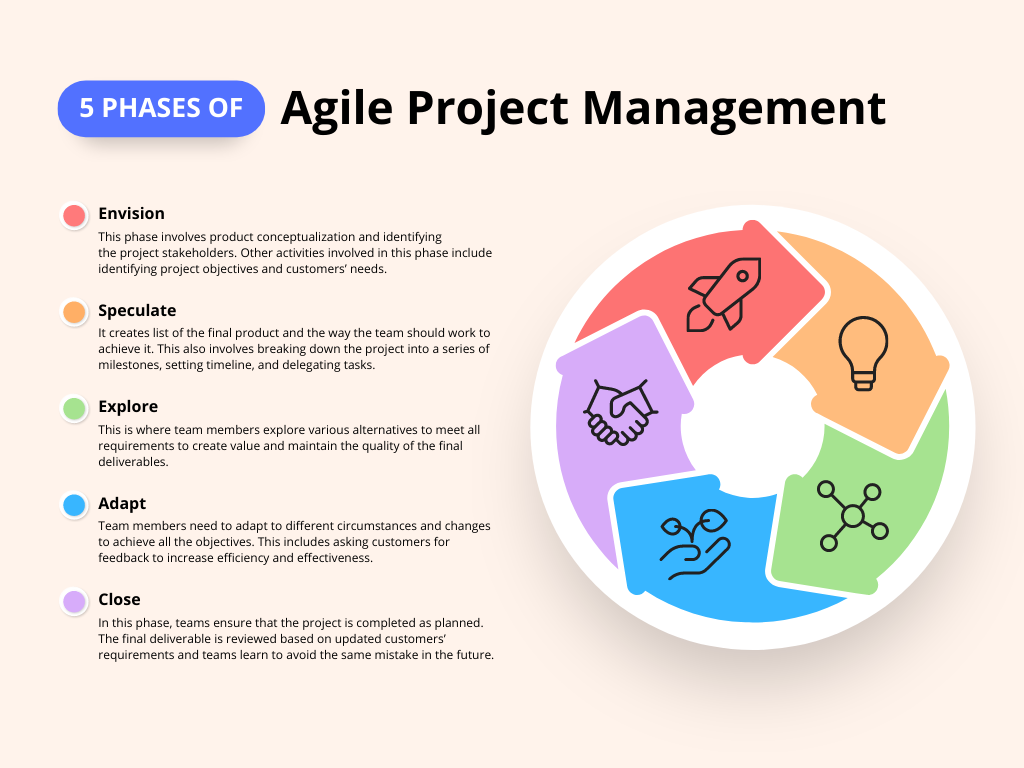It’s the end goal of every brand to increase sales and revenue. And whether or not they achieve that goal depends on their ability to execute projects successfully. That’s no news. As a brand, you know that project management will help boost your efficiency and speed in carrying out tasks.
That said, managing projects is not as easy as it sounds. With so much to organize, one can lose sight of where to start. In such cases, having a firm understanding of the project management life cycle will help.
What is that? How does it help you as a business owner or project manager? And above all, what are the phases of a project management life cycle? Here in this post, you’ll discover the answers to those three key questions. So, to kick off, what does the phrase ‘project management life cycle’ mean?
What is the Project Management Life Cycle (PMLC)?

The project management life cycle is a sequence of tasks and processes which the project needs to go through to be completed. Simply put, it’s the stages involved in completing a project.
By adhering to this sequence of tasks, you can better organize your projects and complete them in the correct order. With all that noted, how do you carry out the project management life cycle? Below are the five key phases of the project cycle to help you complete tasks in the right way.
The 5 Phases of a Project Management Life Cycle
- Initiation
- Project Planning
- Implementation
- Project control
- Closure
1. INITIATION
Project initiation is the first phase and step in the project management cycle. But what does it mean? This phase, as the name implies, is all about getting ready for the following stages of the project’s cycle.
Here, you have to define and identify the goals and scope of the project. In this stage, you’ll identify all that is needed for your team to accomplish the tasks at hand. And this includes the resources and tools to be used during the project.
In addition to that, having a clear understanding of your client’s expectations will help you to better complete your tasks. As such, this is yet another step in the project initiation stage. But how can you identify all these? Consider the following steps –
- Conduct adequate research to discover what solution the project aims to resolve.
- Establish effective communication with your client to understand their visions and expectations.
- Define the project’s goals with Specific, Measurable, Attainable, Relevant, and Timely (SMART) criteria.
- Create a project charter documenting essential project details, such as the goals and budget.
Once you’ve done all that, then you can start planning to execute the project. And this leads to the next phase.
2. PLANNING PHASE

In the initiation stage, you identified the objectives of the project. The next step is to make plans to meet those objectives. That’s what the project planning stage is all about. You have to create a roadmap or timeline that will help your team clearly define their tasks and perform them. Also, the planning stage is where you’ll identify all potential risks to the project’s success and create a way of dealing with them.
It’s accurate to say that the planning phase is the most important of all five in the project management cycle. Why? Imagine you’re making a trip. Surely, the most crucial part of that trip would be your planning. It determines every aspect of your trip from your means of transportation to your accommodation.
Just as your plan affects every aspect of your trip, the project planning phase affects every aspect of your project. Without the plan to serve as a guideline or roadmap, you can’t effectively execute the job at hand.
3. PROJECT EXECUTION PHASE
The project execution or implementation phase is the third stage in the project management life cycle. As you might have guessed, this phase is where all research made in the prior stages is put to use. It is the phase where you and your team perform the job.
However, the project manager has more to do here. He has to make sure the task is understood and that every team member is on one page. To achieve that, you may decide to implement the use of PM collaboration tools. These are increasingly popular and help businesses create, assign, and complete tasks within a project.
4. CONTROL PHASE
The control and management phase of the project management life cycle goes hand-in-hand with the execution stage. After all, without properly supervising the job, it will be more difficult to meet deadlines and expectations. So, in order words, this phase is all about keeping the project on track and it mostly falls on you as the project manager.
Here, you also have to monitor the resources and budget available to ensure nothing unexpected occurs. Like the planning phase, you also have to keep your eyes out for anything that might risk the success of the job.
So, in short, this step involves you making sure everything is going according to the plan made in the second phase.
5. THE CLOSING PHASE

By this phase, all tasks involved in the project are completed and ready for submission. After making adequate revisions, you can hand over the deliverable to the client. But does it end there?
To wrap up the life cycle, it’s always good to have a post-project meeting to discuss and review all that happened during the project. ‘Did we meet the goal?’ ‘Was there any delay?’ ‘Were there any obstacles?’ ‘How did we address them?’ ‘How can we avoid such problems in future projects?’ These are just some areas that you and your team may want to ponder.
Wrapping Up
The project management life cycle is a helpful strategy to use when handling projects. It allows you to carry out your tasks in the correct order. Furthermore, it can help you create an effective plan for your project.
As discussed in this post, it begins with the initiation and planning phase, where all goals and tasks are defined. And following that, the implementation and control phase helps a team to ensure the project is going according to what was envisioned.
And in the closing stage, reviewing a project can help a firm know what to do and avoid in subsequent tasks. As a project manager or business owner, the five phases of a project’s life cycle should be kept in mind if you’re looking to achieve your end goals.







